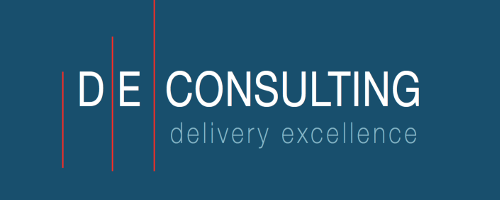In current challenging times, companies are thriving to perform in today’s market conditions and ever growing competition.
Based on a study of 1,854 corporations by Chris Zook and James Allen it appears that although 90% of those companies have made detailed strategic plans with high profit targets, 7 out of every 8 companies failed to achieve around 5% their annual growth target and missed majority of their strategic plan. This article looks at the main causes and lists practical ways to handle them based on latest research.

Strategy Management
Looking at a typical organizational unit, we identify the top strategic level, where CEO of the company resides. The CEO and his board executive members lay identify the strategy and turn the strategy into strategic goals and KPI-Key Performace Indicators and then they are propagated down into executional plans and actions in the organization. Pic1 below shows a typical structure of organizational levels. 85% of executive leadership teams spend less than one hour per month discussing their unit’s strategy, with 50% spending no time at all.

Pic1. Typical organizational structure
Latest studies done in the past 15 years show that 95% of employees are unaware or do not understand the company strategy and its values.- The impact is even bigger when it comes to employees that are closest to customers. (The Strategy-Focused Organization, Harvard Business School Press). In many cases there is even a huge discrepancy between the key functions like finance, IT, HR and functions with the Strategy planning. Surveys show that 67% of HR and IT organizations are not aligned with business unit and corporate strategies; nor do HR and IT departmental plans support corporate or business-unit strategic initiatives.
For example budgeting (finance) is similarly disconnected: Some 60% of organizations do not link their financial budgets to strategic priorities. Incentives aren’t aligned, either: The compensation packages of 70% of middle managers and more than 90% of frontline employees have no link to the success or failure of strategy implementation. This leads to the lack of coherence in the organization, Communication problems and potential conflicts and the end of the day CEO is unable really to determine the current status of performance in his organization. This is seen by Investors, customers and potential employees. See pic.2

Pic.2 the disconnect between strategy formulation and execution.
On the other hands most well performing organizations were able to deal with the disconnect between strategy formulation and strategy execution. Research shows that those companies were able to achieve better and longer lasting results by improving facilitation communication within the organization by introducing a new supporting function called mostly the Office of Strategy Management (OSM). This is not a new organizational unit, it is a function that is reporting to CEO, that has a advisory function but also is responsible for assuring that strategic level plans are translated into deliverable actions, executed by each organizational level. OSM also assures that employee competency are aligned around delivering those plans- by e.g. also setting proper development plans consistent with their personal goals, objectives and incentives.
The members of the Office for Strategy Management (OSM) can consist for example of external competent consultants, coaches and program managers that have project management experience running also Project Management Office. OSM is something more that PMO (Project Management Office). OSM needs to have a strong management sponsorship to help execute strategic plans and drive change in the organization. CEO must insure that all key management team are fully supportive in executing the key strategic plans in the organizations. Otherwise only OSM/PMOs are only 33% effective in implementing strategic plans when lacking the necessary management investment in the sponsor’s right attention and resource competences.
More on the benefits of OSM can be found here
Milestone group
We support our clients in accelerating the use of their potential. We provide also services that help speed business development and growth- both on the personal and organizational level.
At the personal level we primarily coaching and training. In this way we provide practical tools for entrepreneurs and managers in terms of changing attitudes, building, replacing habits that develop soft skills in area such as time management, project delivery, negotiations, communication, public speaking, stress reduction or sale performance.
At the organizational level we provide consultancy in the field of strategic management, restructuring, building effective business processes, sales management and IT.
Our role is to guide companies and top management through the process changes, release constructive new quality of energy and habits, and make them stick the on multiple levels that help deliver to meet or even exceed their goals.
What differentiate us are common values and enthusiasm, result “Milestone” oriented experienced and multicultural team.
We strongly believe that what primarily drives performance, “beside being just competent” is mainly attitude driven skill: such as integrity, coherent values and mastering communication skills and being people oriented. We would like to share with you our VTM (Value Transition Method) methodology- that is based on latest global research and on our team life coaching and vast business experience.
Sources: Inspired by:
Harvard Business Review by Robert S. Kaplan and David P. Norton
PMI- Impact of PMOs on strategy Implementations



